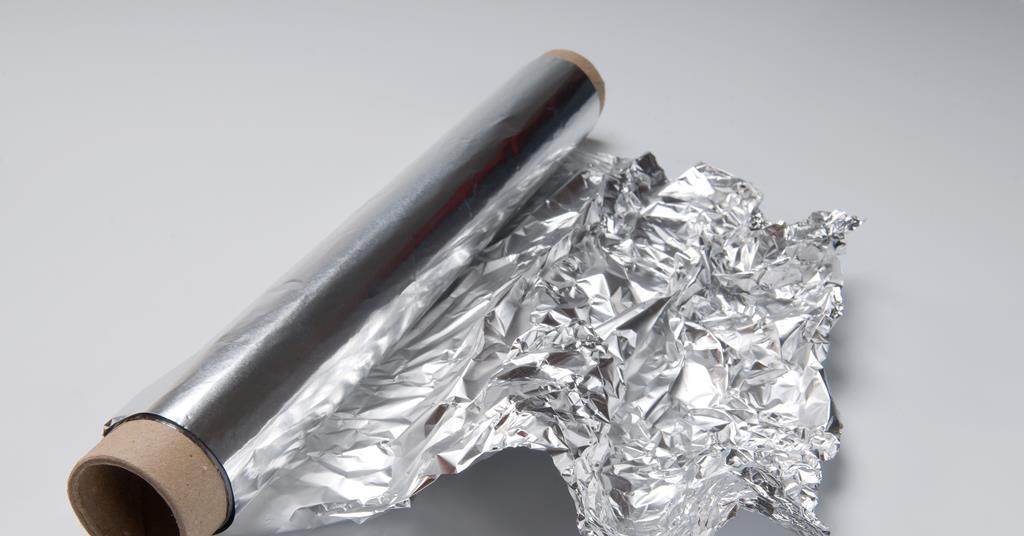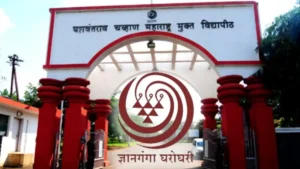Aluminium makes up around 8% of the Earth’s crust, making it the most prevalent metal on the planet. It is, however, always found in combination with other elements and never in a pure condition. Alum and aluminium oxide are two of the most commonly encountered aluminium compounds.
Most Abundant Metal in Earth Crust
Aluminium is a lightweight, soft, and robust metal that can be easily moulded. Its colour ranges from silvery grey to a drab grey. It is non-magnetic and corrosion-resistant. Under the correct circumstances, it can dissolve in water, however this is unusual.
Read More:
- Fleming’s Left Thumb Rule Statement
- Chlorine Atomic Mass And Weight In Kilo Grams
- State Difference Between Acid And Base
- Displacement Reaction – Definition, With Examples For Class 10
Most Abundant Metal in Earth Surface
The refining of a rock called bauxite produces the majority of the world’s aluminium. Aluminium, in one of its natural forms, is mixed with oxygen in this rock. The water is removed from the bauxite, leaving aluminium oxide, which is then refined into aluminium. While the United States produces the majority of the world’s aluminium, the ore is imported from countries such as: Canada, China,India, Brazil,Russia and Australia
Most Abundant Metal in Earth Core- Aluminium’s Size
Aluminium has an atomic number of 13, which basically implies that the nucleus of an aluminium atom has 13 protons. Aluminium will mix with about 270 different minerals in nature.
Most Abundant Metal- Aluminium’s Benefits
Aluminium is used to make cans, foils, aeroplane parts, rocket parts, and cooking utensils, among other things. It’s in electrical wires and mirrors, and it’s a key component of many synthetic materials. Aluminium can be found in watches, automobiles, bicycles, paint, and train waggons.
Most Abundant Metal in Earth Crust by Weight
Aluminium was originally regarded as a valuable metal, despite its abundance. When it was initially discovered in the late 1700s, it was more valuable than gold. The Washington Monument was topped with a pyramid-shaped piece of metal because it was so precious. Aluminium became substantially less expensive as techniques were perfected to manufacture it more effectively and in larger numbers.
Physical and Chemical Properties of Most Abundant metal- Aluminium
The third most prevalent element in the Earth’s crust is aluminium.” Hans Christian Oersted was the first person to isolate aluminium in 1825. Aluminium is a chemical element with the atomic number 13 and the symbol Al.
Most Abundant Metal- Aluminium’s Physical Properties
The colour of aluminium is silvery-white. It melts at 1220.576 degrees Fahrenheit and boils at 4472.33 degrees Fahrenheit. Aluminium has an atomic radius of 143.1 pm and an atomic weight of 26.98154. It’s one of the most malleable and ductile metals. Aluminium is a non-magnetic material.
Most Abundant Metal- Aluminium’s Chemical Properties
Aluminium generates an oxide skin called aluminium oxide when it comes into contact with oxygen. This skin aids in the corrosion resistance of aluminium. When aluminium is powdered, it easily catches fire when exposed to flame.It reacts with acids and alkalis as well.
Most Abundant Metal- Aluminium’s Uses
Aluminium’s physical and chemical qualities make it an excellent material for cooking utensils, automobile parts, construction materials, and food and beverage containers.
Other Abundant metals in the Earth
The lithosphere, often known as the crust, is the Earth’s outermost layer. The oceans and land masses are both contained within this hard stratum. The majority of elements are only present in trace levels in the earth’s crust, although a few are abundant Compounds and Elements. From hydrogen to uranium, there are 92 naturally occurring elements, and the earth’s crust includes virtually all of them.
An element is a substance that cannot be broken down any more chemically. The nuclei of all atoms of a given element have the same number of protons. Elements are represented on the periodic table by a symbol, such as O for oxygen. A compound is generated when two or more components combine. Silicon tetra oxide, SiO4, is an example of a silicon-oxygen compound.
Silicon:
Silicon is the second-most abundant element in the crust of the Earth. Silicon, or Si, is a metalloid that is the second most prevalent element in the Earth’s crust, accounting for 28% of its mass.
It generates silicate minerals, such as silicon dioxide (SiO2), when it reacts with oxygen. Sand is mostly made up of silicon dioxide, while quartz and other crystalline rocks are made up of silicate elements. Silicon is also used in the production of electronic components and computer processors.
Iron: Transitional Metal
Iron (Fe) is the fourth most abundant metal in the Earth’s crust, accounting for more than 5% of its mass.
Hematite and magnetite are the most common sources of iron. 90% of all metal refined today is iron, which is largely used to manufacture steel, a carbon-iron alloy. In the human body, iron is also a vital nutrient.
Calcium:
Calcium is the most abundant alkaline earth metal in the crust of the Earth.
Calcium (Ca) is the most abundant alkaline earth element in the Earth’s crust, accounting for around 3.6 percent of the total.
This reactive element that rapidly forms compounds with oxygen and water and is not found free in nature is the fifth most prevalent element in the earth’s crust. Calcium compounds are used in a variety of products, including gypsum board (drywall), chalk, and toothpaste.
Sodium:
Sodium Is the Most Common Alkali Metal in the Earth’s Crust. Sodium (Na) is the most abundant alkali metal in the earth’s crust, accounting for 2.8 percent of the total.
The sixth most prevalent element is best known as a component of sodium chloride, which is used to manufacture table salt (NaCl). Sodium is a highly reactive element that isn’t found alone. It’s found in a variety of products, including baking soda, caustic soda, and borax. Sodium lamps emit a brilliant yellow-orange light that is commonly used to illuminate roadways and parking lots.
Potassium: Alkali Metal
Potassium (K) is the seventh most common element, accounting for around 2.6 percent of the Earth’s crust.
This highly reactive element is never found in nature and produces a variety of compounds. Potassium compounds are used in the production of fertiliser, soaps, detergents, and some types of glass.
Magnesium:
Magnesium is an alkaline earth metal with a high alkalinity.
Magnesium is the eighth most plentiful element in the earth’s crust, accounting for around 2.1 percent of its mass.
Magnesium is only found in compounds in nature, not as a single element. Magnesium has a variety of uses at home, including as an antacid and laxative, as well as being the primary component of Epsom salts. Magnesium-aluminium alloy is utilised in the manufacturing of aircraft and other applications that demand strong, light metals
Related Post:
- Fleming’s Left Thumb Rule Statement
- Chlorine Atomic Mass And Weight In Kilo Grams
- State Difference Between Acid And Base
- Displacement Reaction – Definition, With Examples For Class 10
- What Is The Standard Meridian Of India?
- Integration Formulas List And PDF For Class 12
- Perimeter Of Triangle – Formula, Definition, Examples
- Area Of Parallelogram – Formula, Definition, Example
FAQs on Most abundant metal in earth is- Aluminium
Q. Is Aluminium a metal?
Ans. Aluminium is a chemical element that is a lightweight silvery white metal which lies in the periodic table’s primary Group 13 (IIIa, or boron group). Aluminum is the most common nonferrous metal and the most plentiful metallic element in the Earth’s crust.
Q. Is Aluminium correct or Aluminum correct?
Ans. Aluminium is the word used in the English Language that us used in the United Kingdom, whereas Aluminum is the word used in the English language used in the United states.
Q. Is pure Aluminium toxic?
Ans. Aluminum is a lightweight and soft metal. Because of a thin coating of oxidation that accumulates quickly when exposed to air, it has a dull silvery look. Aluminum is non-toxic, non-magnetic, and non-sparking as a metal.
Q. Is aluminium poisonous to humans?
Ans. Aluminium exposure is unavoidable and, maybe, unquantifiable in humans. Alaq(3+), the free metal cation of aluminium, is extremely physiologically reactive, thus biologically accessible aluminium is non-essential and generally poisonous.
Q. What is the use of Aluminium?
Ans. Cans, foils, culinary utensils, window frames, beer kegs, and aeroplane parts are all made of aluminium. This is due to its unique characteristics.









 DTE Maharashtra Polytechnic Merit List 2...
DTE Maharashtra Polytechnic Merit List 2...
 JEECUP Round 2 Seat Allotment Result 202...
JEECUP Round 2 Seat Allotment Result 202...
 YCMOU Result 2025 Out @ycmou.digitaluniv...
YCMOU Result 2025 Out @ycmou.digitaluniv...









